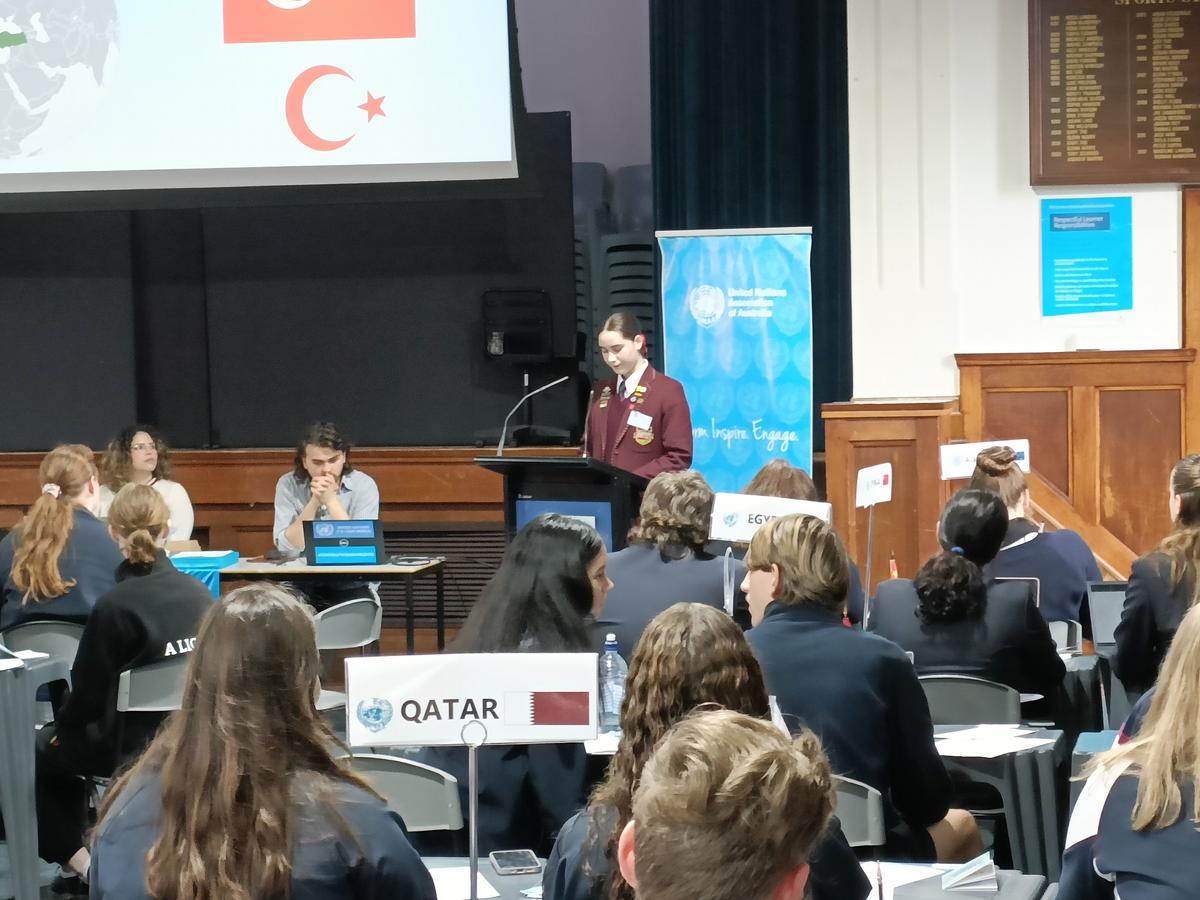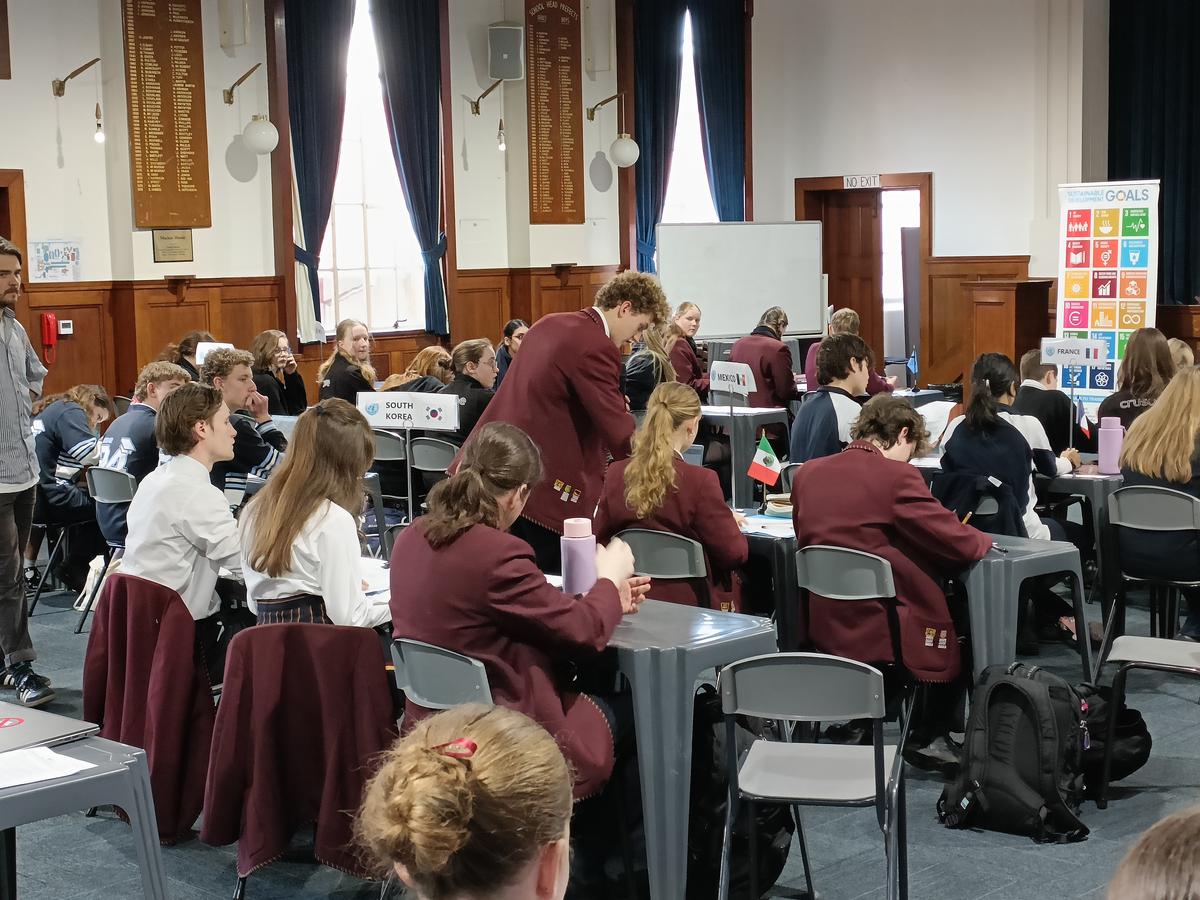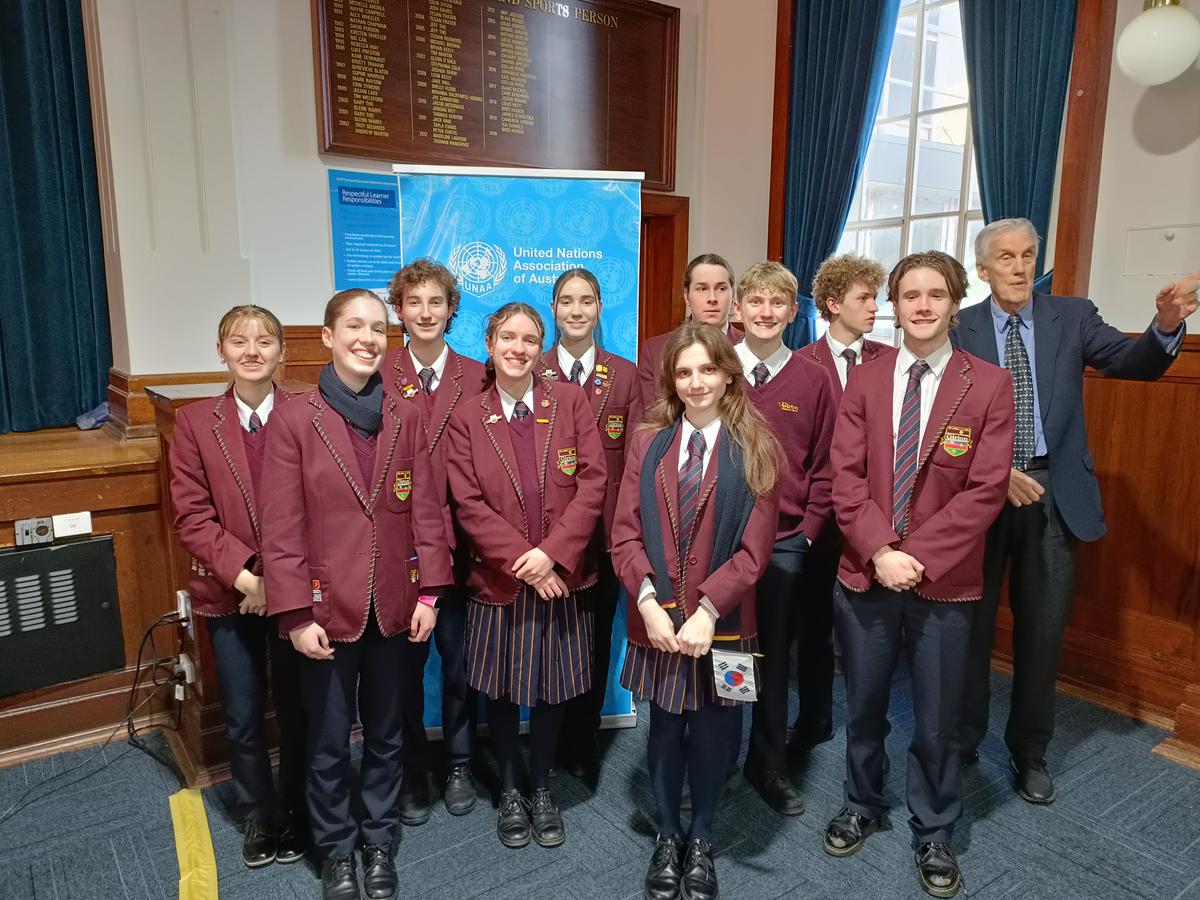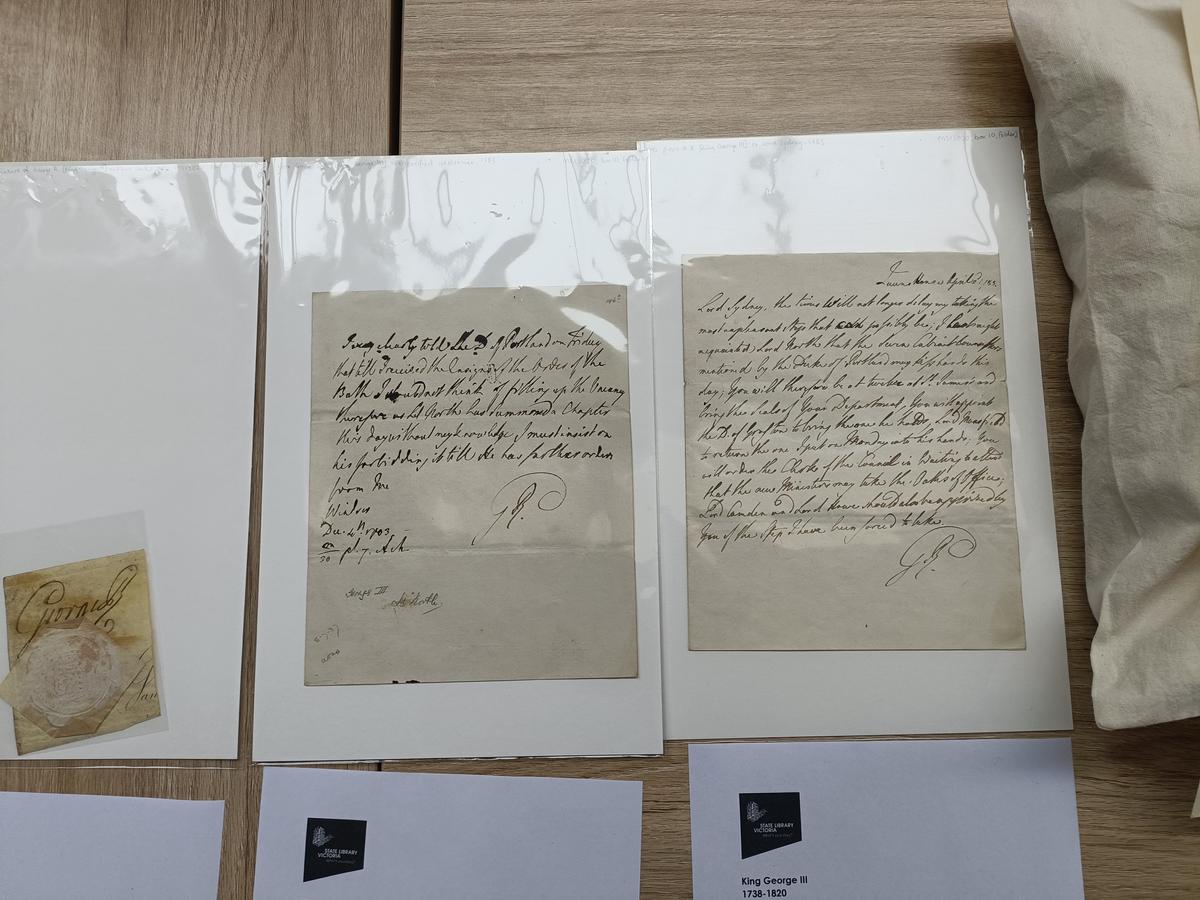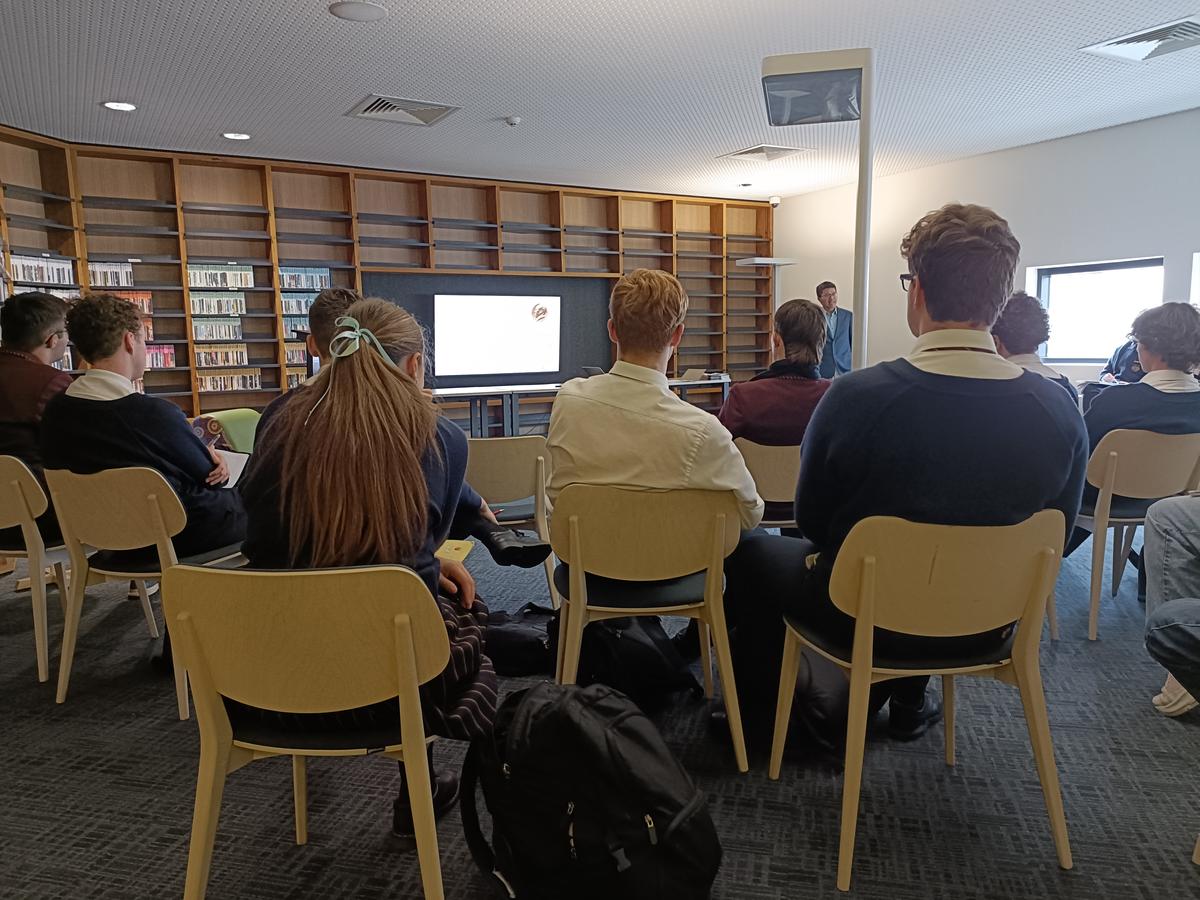Humanities News
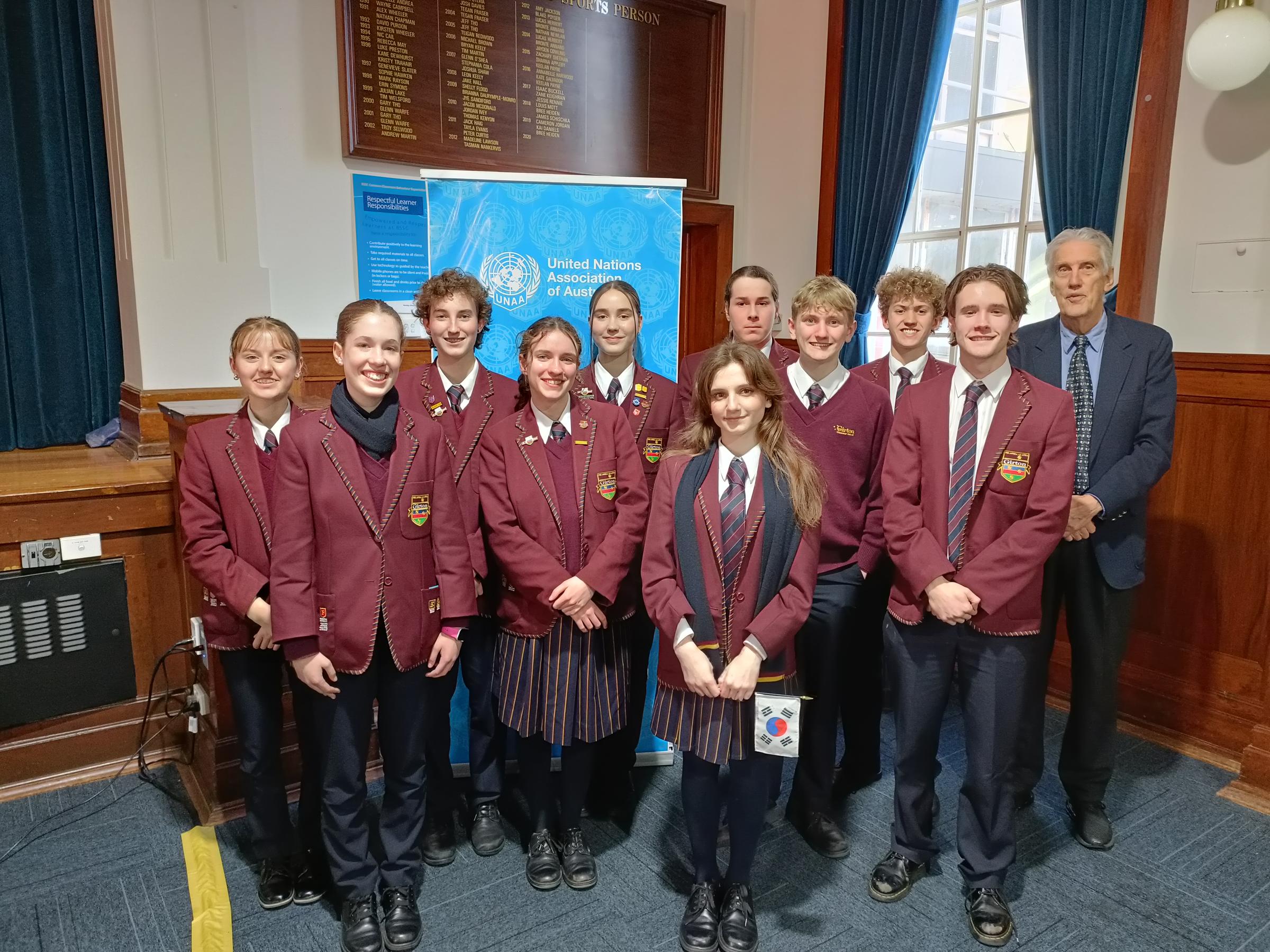
On Thursday 22 August, a delegation of 12 Girton Year 10 students made their way to Bendigo Senior Secondary College to attend a Model UN Conference hosted by the United Nations Association of Australia.
Officially titled ‘Pathways to Peace: Addressing War, Conflict and Global Security’, the event provided a fantastic opportunity for our students to test their diplomatic skills with students from other schools in the Bendigo region. Girton students were assigned to Mexico, Botswana, South Korea and Türkiye, role-playing in line with their countries’ ideologies. The Acting Secretary-General was Ian Howie, who has served as a diplomat in China and other countries in the Asia-Pacific region. He is currently an Adjunct Professor of International Studies at RMIT University and an Associate Professor at the University of Melbourne's Nossal Centre.
The students engaged in four sessions, beginning with a few minutes to speak to their position statement. This was followed by a quick break before heading to the caucus, where they were able to debate their positions in relation to the prescribed resolution. After a lunch break, the students then got to expand on this diplomacy by voting on amendments to the resolution, before signing off for a final vote.
The students praised the conference highly, and we hope that the memories of this day will stay with them forever.
Mr Jack Smeelie
Teacher of Humanities
The Model UN Conference was an engaging and exciting experience for me. Mietta, Charli and I were allocated the delegation of Türkiye, and I really enjoyed attending the preparation meetings, discussing potential issues with teachers, and researching our country. At the conference, we were able to meet so many new people from schools around Bendigo, and I loved being able to form alliances with the delegations of Ukraine, New Zealand and India, as they shared similar viewpoints to that of our group.
At the caucus, our group found it very interesting to learn about the perspectives of the other 15 nations represented at the mock conference, and had fun debating other groups in both moderated and unmoderated settings. By the end of the day, I found that my public speaking skills had improved, and I had learnt a lot about the history and protocols of the UN. The highlight of my day was having a great time laughing with all the delegations about Qatar’s … well, interesting propositions, which were, to put it lightly, not supported by the other attending Member States.
Audrey Jackson
10 Frew
The Model United Nations General Assembly started with preparation work on position statements and general knowledge about the country that we had been given. I was given Mexico, which luckily enough is a very engaged country within the United Nations and is largely friendly with most other major countries. To start the day, each country read their position statements in alphabetical order. While listening to the position statements, we had to fill out a sheet to determine if each country was likely to vote with our country’s values or against them.
After a short 20-minute break we started the caucus session, where each country discussed issues with amendments or issues within their country and how they related to the draft resolution. Mexico wanted a stronger position on clause 1.6, about the international arms trade and disarmament; however, the Turkish delegates strongly disagreed with this, as they needed the money from arms deals to assist large numbers of refugees and protect themselves from nearby aggressors. So, we clarified the amendments and reached a compromise about reasonable disarmament without complete disarmament, while also strengthening clause 2.8 about wealthy nations giving aid to nations with large numbers of refugees.
The last session saw us vote on the draft resolution, and there were many debates between nations with opposing viewpoints, such as Australia and Egypt surrounding religion’s role in society, and Mexico and Turkey about disarmament and arms deals. Overall, the day was very enjoyable, and I would recommend it to all those interested in humanities.
Hamish Knight
10 Aherne
The Model UN excursion on Thursday on the topic of Pathways to Peace, was a great experience to gain a greater knowledge on some of the member states in the UN and their political opinions. First of all, each of the 16 countries presented a previously made position statement on their views on the topic which lasted until morning tea. After that there was a debate where the countries make arguments about whether they agreed or disagreed with what other countries were saying and asked them questions. This was the most interesting part and we got to meet students from other schools which was fun. We made amendments before lunch and tried to get support from the other countries. We had lunch break and then we voted for a few of the amendments before leaving. Overall, it was a fun and interesting day.
Charli Hosking
10 Frew
History Roadshow and Golden Dragon Museum
The Unit 3/4 History students have been very busy over the past week! On Friday 16 August, 19 students made their way to the Bendigo Library to attend the History Council of Victoria History Roadshow. The History Council of Victoria has been running this event for regional students since the 1970s to ensure they have the same access to resources as metropolitan students. This is the first time the event has run in person in four years, as the COVID-19 pandemic forced it to be held via Zoom.
Students were able to see treasures brought to Bendigo from the State Library of Victoria collection, such as the Moskau booklet; the first edition of Das Kapital; and historical letters from well-known figures in history, including Napoleon, George Washington and King George III. They then chatted to staff and viewed historical documents at the Bendigo Library's Regional Archives Centre. The students also heard two lectures from prominent historians, including Oleg Beyda from the University of Melbourne on the Russian Revolution, and Xiaoping Fang from Monash University on the Chinese Revolution. Students said they really enjoyed the day and getting out of the classroom.
The following Tuesday, the students braved the rain and walked to the Golden Dragon Museum. There they received a tour of the museum, focusing on the fall of the Qing Dynasty, the early years of the Chinese Republic, and the links between the Bendigo Chinese community and the new Republic of China. Seeing artifacts makes history physical, so student feedback was positive. Many also said that they did not know about the links between semi-contemporary China and Bendigo, so their minds were enlivened. Overall, the Unit 3/4 History students have had a great time engaging in experiential learning outside the classroom.
Mr Jack Smeelie
Teacher of Humanities

